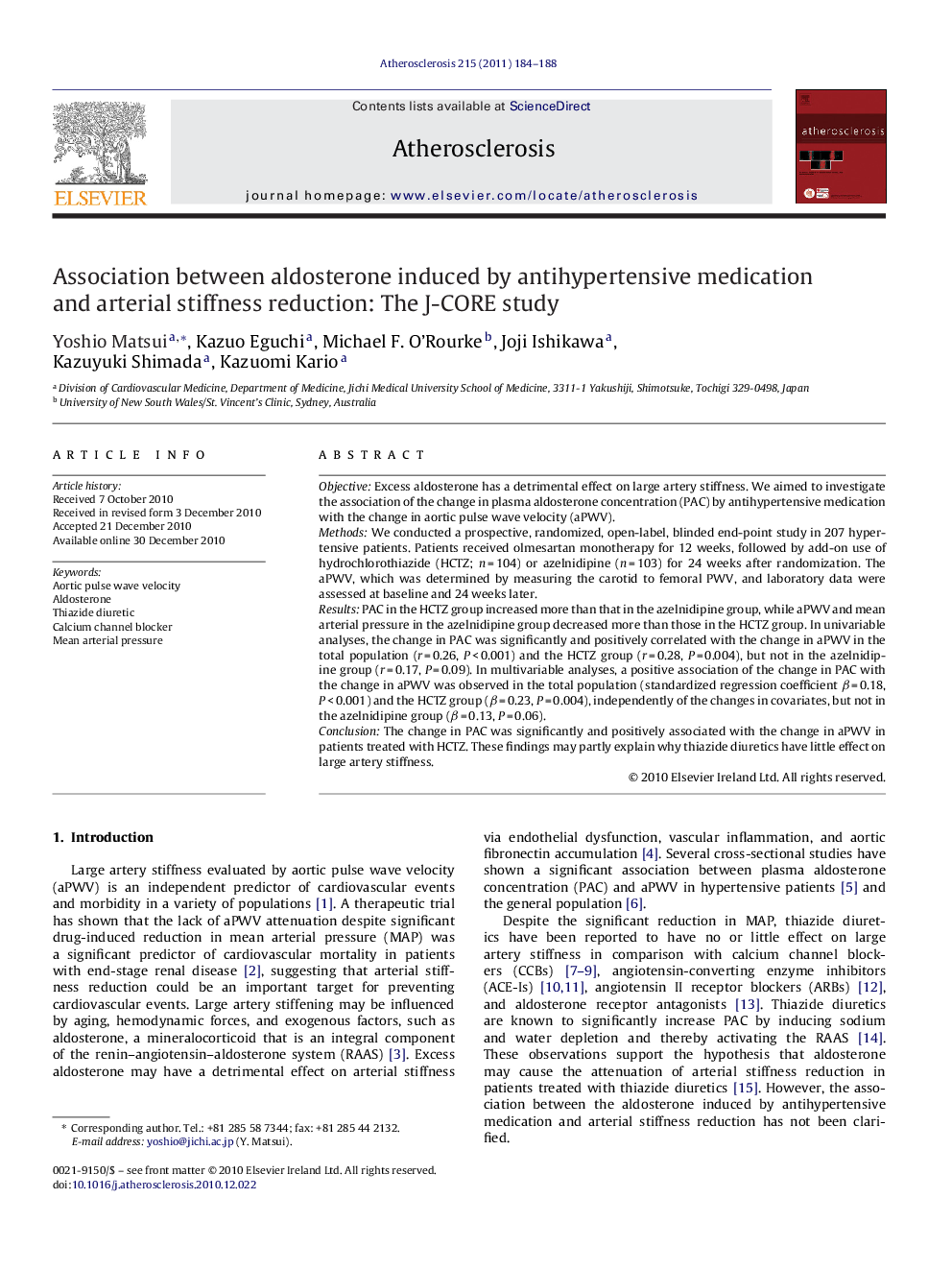| Article ID | Journal | Published Year | Pages | File Type |
|---|---|---|---|---|
| 2892906 | Atherosclerosis | 2011 | 5 Pages |
ObjectiveExcess aldosterone has a detrimental effect on large artery stiffness. We aimed to investigate the association of the change in plasma aldosterone concentration (PAC) by antihypertensive medication with the change in aortic pulse wave velocity (aPWV).MethodsWe conducted a prospective, randomized, open-label, blinded end-point study in 207 hypertensive patients. Patients received olmesartan monotherapy for 12 weeks, followed by add-on use of hydrochlorothiazide (HCTZ; n = 104) or azelnidipine (n = 103) for 24 weeks after randomization. The aPWV, which was determined by measuring the carotid to femoral PWV, and laboratory data were assessed at baseline and 24 weeks later.ResultsPAC in the HCTZ group increased more than that in the azelnidipine group, while aPWV and mean arterial pressure in the azelnidipine group decreased more than those in the HCTZ group. In univariable analyses, the change in PAC was significantly and positively correlated with the change in aPWV in the total population (r = 0.26, P < 0.001) and the HCTZ group (r = 0.28, P = 0.004), but not in the azelnidipine group (r = 0.17, P = 0.09). In multivariable analyses, a positive association of the change in PAC with the change in aPWV was observed in the total population (standardized regression coefficient β = 0.18, P < 0.001) and the HCTZ group (β = 0.23, P = 0.004), independently of the changes in covariates, but not in the azelnidipine group (β = 0.13, P = 0.06).ConclusionThe change in PAC was significantly and positively associated with the change in aPWV in patients treated with HCTZ. These findings may partly explain why thiazide diuretics have little effect on large artery stiffness.
